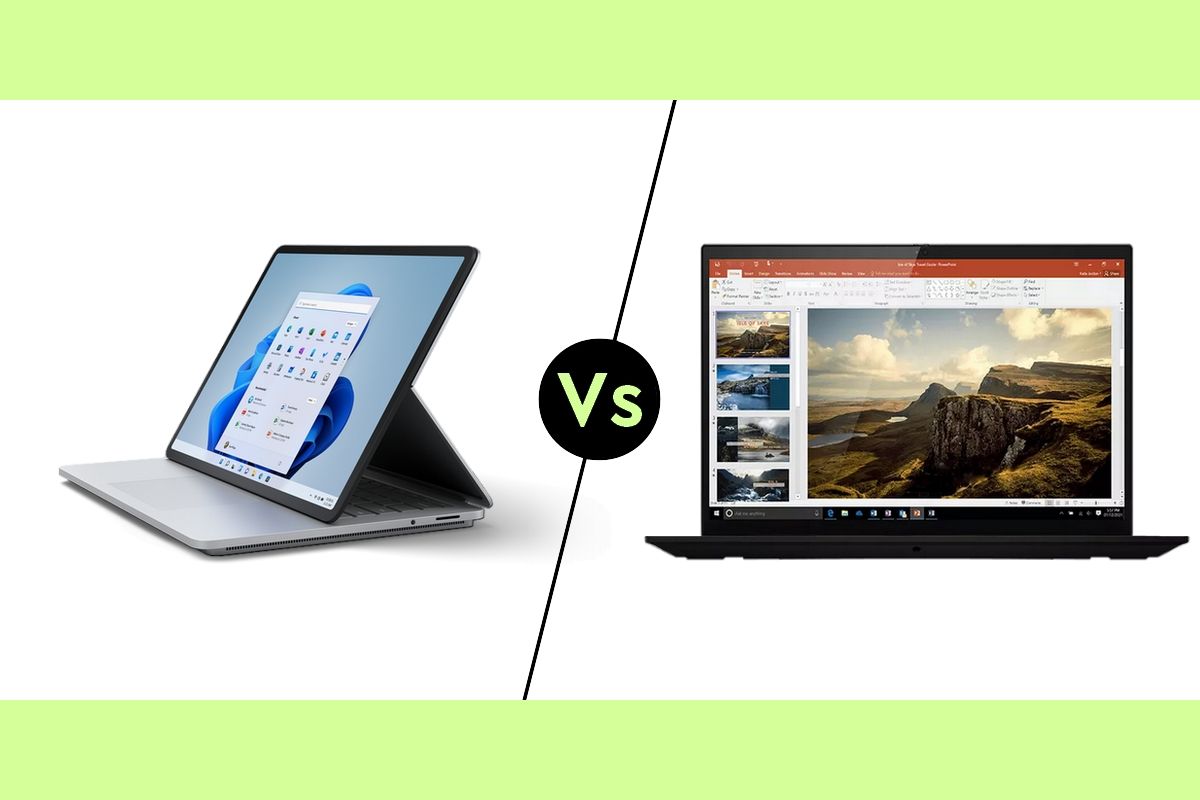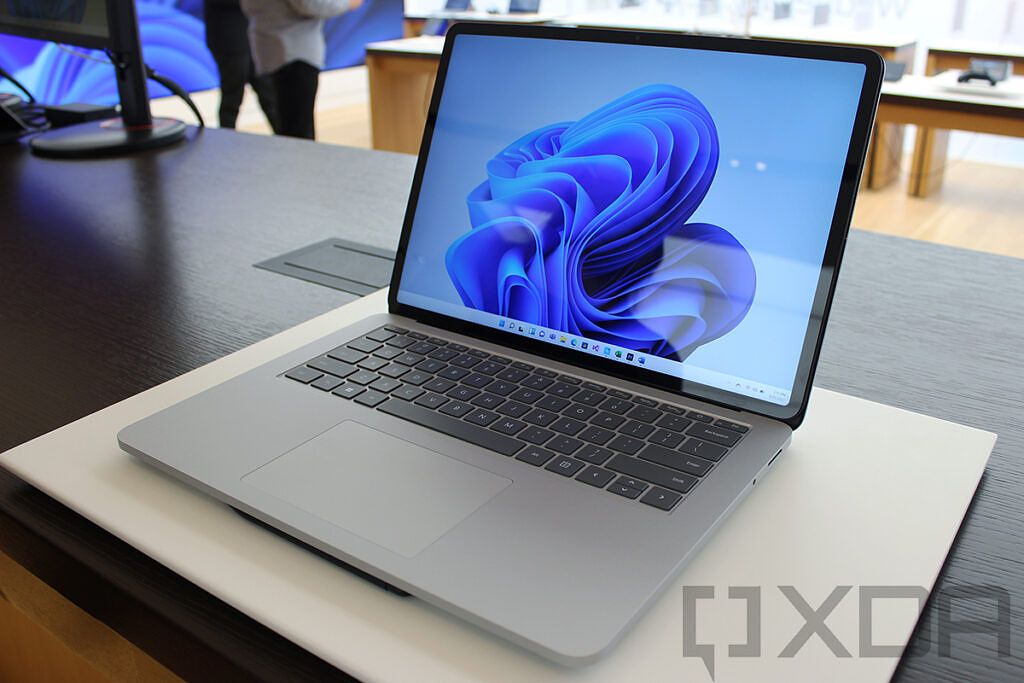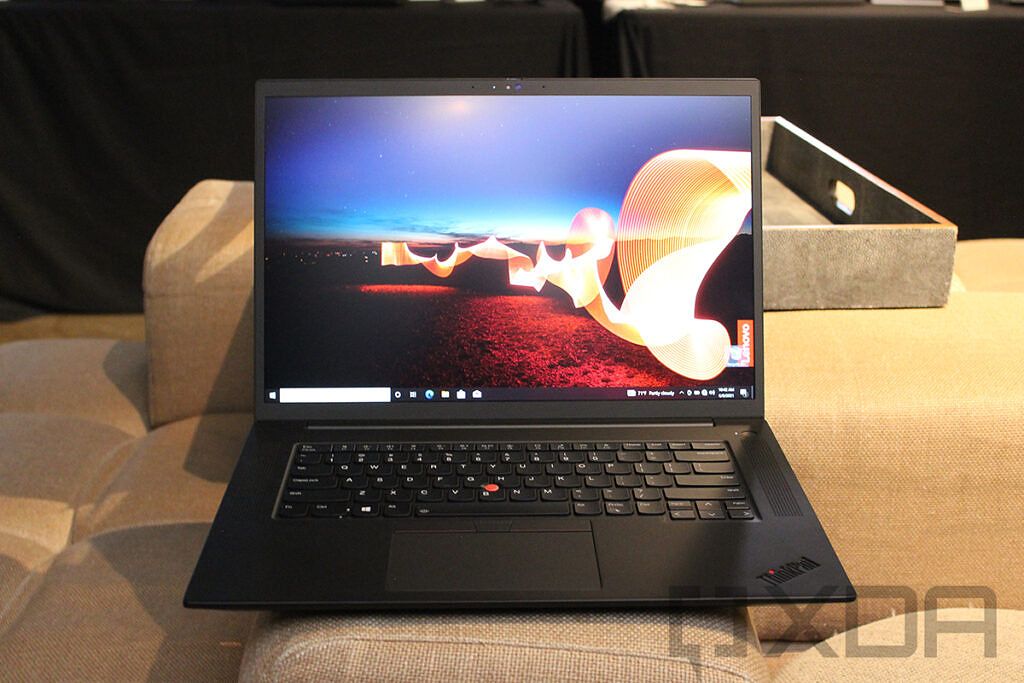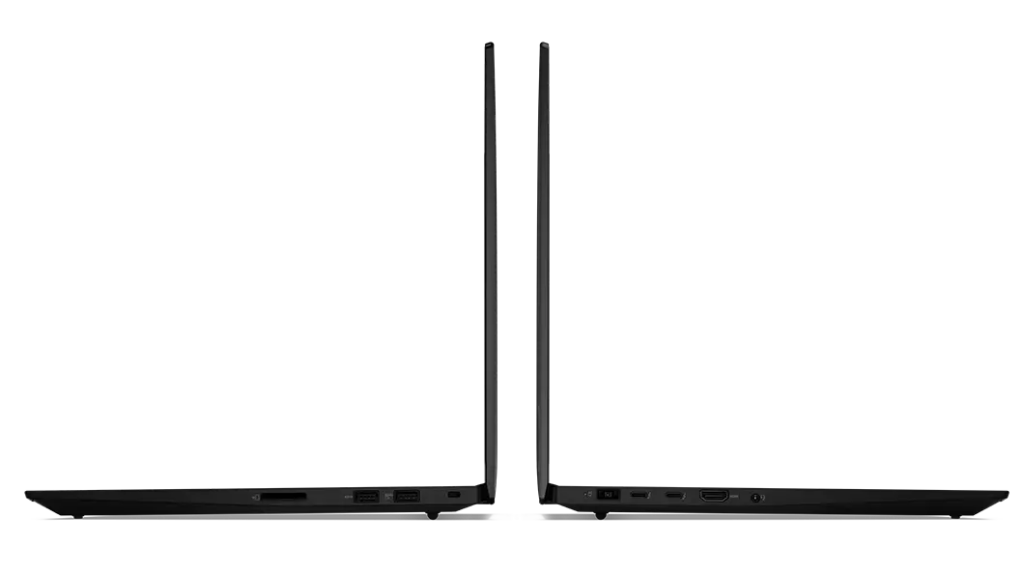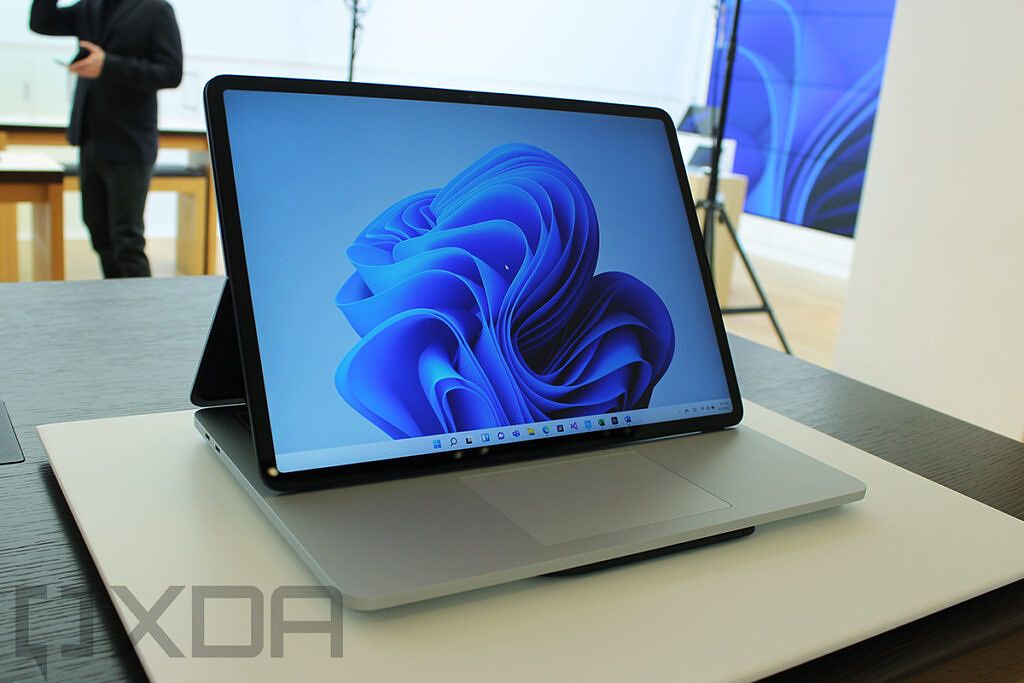Microsoft recently launched the Surface Laptop Studio, calling it the most powerful Surface ever. Featuring the latest Intel H35-series processors and an NVIDIA GeForce RTX 3050 Ti, it's indeed at the top of the Surface family. But when it comes to powerful laptops, there are many more options out there, even if you stick to more business-oriented products. In this article, we'll be comparing the Surface Laptop Studio to the Lenovo ThinkPad X1 Extreme to find out which is better for you.
These are two very different laptops, with the Lenovo ThinkPad X1 Extreme specifically being aimed towards business users. Because of that, this laptop is highly configurable, and while the Surface Laptop Studio also has plenty of configurations, you just get more freedom with the ThinkPad X1 Extreme.
Surface Laptop Studio vs ThinkPad X1 Extreme: Specs
As usual, we'll take a look at the specs for each of these laptops first. As we've mentioned, the Lenovo ThinkPad X1 Extreme offers a lot of configuration options, which you'll see in the table below.
|
Surface Laptop Studio |
Lenovo ThinkPad X1 Extreme |
|
|---|---|---|
|
Processor |
|
|
|
Graphics |
|
|
|
RAM |
|
|
|
Storage |
|
|
|
Display |
|
|
|
Audio |
|
|
|
Webcam |
|
|
|
Biometric authentication |
|
|
|
Battery |
58Wh battery
|
4-Cell 90Whr battery
|
|
Ports |
|
|
|
Connectivity |
|
|
|
Colors |
|
|
|
Size (WxDxH) |
12.72 x 8.98 x 0.746 in (323.28 x 228.32 x 18.94 mm) |
14.13 x 9.99 x 0.7 in (359.5 x 253.8 x 17.7 mm) |
|
Weight |
|
|
|
Starting price |
$1,599.99 |
$1,639.20 (varies) |
Performance: The ThinkPad X1 Extreme is well ahead
Microsoft may tout the Surface Laptop Studio as an ultra-powerful laptop, but one thing that might not be immediately apparent is that the company is using Intel H35 processors. These are new 35W processors from Intel, and while they're certainly better than your typical 15W processors in many laptops, they don't stand toe to toe with the 45W processors inside the ThinkPad X1 Extreme. Intel's 45W processors have more cores and generally faster clock speeds.
Here's a comparison of the Intel Core i7 models in these two laptops using the GeekBench 5 benchmark:
|
Intel Core H35 i7-11370H |
Intel Core i7-11800H |
|
|---|---|---|
|
GeekBench (single/multi-core) |
1,448 / 4,811 |
1,488 / 8,058 |
Aside from the lower overall power consumption, one reason the CPU is slower in the H35 series processors is the inclusion of Intel Iris Xe graphics. That's a legitimate advantage if you're sticking with integrated graphics, but both of these laptops come with dedicated graphics too, and that's likely the option you'll choose.
The Lenovo ThinkPad X1 Extreme has 45W processors and up to a GeForce RTX 3080 GPU.
In that regard, the Lenovo ThinkPad X1 Extreme goes all the way up to an NVIDIA GeForce RTX 3080 with 16GB of GDDR6 memory, a huge leap from the GeForce RTX 3050 Ti in the Surface Laptop Studio. When it comes to power, these two laptops are fairly far apart. That's not to say you'll get bad performance out of the Surface Laptop Studio of course -- it's still a fast laptop and will handle almost anything you throw at it just fine. The ThinkPad X1 Extreme is just that much further ahead.
That's also true for RAM and storage, with the Lenovo ThinkPad X1 Extreme offering up to 64GB of RAM and 4TB of SSD storage, both of which double the maximum inside the Surface Laptop Studio. It's also worth noting with the ThinkPad X1 Extreme, you can upgrade these components individually, while the Surface Laptop Studio offers more restrictive configuration options.
The ThinkPad X1 Extreme is also meant to be upgradeable after the fact, which you can't do as easily with the Laptop Studio. However, keep in mind if you include a GeForce RTX 3060 or higher, the storage will also max out at 2TB for the ThinkPad X1 Extreme.
Finally, battery life is one aspect where the Surface Laptop Studio seems to come out on top. Despite the smaller battery, using more efficient processors and presumably other optimizations give the Surface Laptop Studio a battery life of up to 18 hours, even with dedicated graphics. That's 80% more than what Lenovo promises for the ThinkPad X1 Extreme.
It's worth mentioning that Lenovo and Microsoft use different measurements, with Lenovo using MobileMark 2018 for its tests, and Microsoft simply using "typical device usage" as a measurement. However, MobileMark 2018 does test typical usage scenarios for business users, so the results probably aren't too far off.
Display: Two fantastic options
If there's one area where both of these laptops shine, it's the display, even though they're pretty different. The Surface Laptop Studio features a 14.4 inch display touchscreen with a fairly high resolution of 2400 x 1600. That gives it a 3:2 aspect ratio, and it's both sharp and large enough for almost anything you might want to do on it. Plus, it has a 120Hz refresh rate for extra smooth visuals and Dolby Vision support for HDR content. There's also the fact it supports the Surface Slim Pen 2 and its haptic feedback to make it feel like you're writing on paper.
You can only get a touchscreen on the ThinkPad X1 Extreme if you get the 4K+ display.
Comparatively, the Lenovo ThinkPad X1 Extreme has a 16 inch display, and starts with a resolution of 2560 x 1600. That gives it a slightly wider 16:10 aspect ratio, but more overall resolution. However, you can go even further and upgrade to a 4K+ display with a resolution of 3840 x 2400, which also supports Dolby Vision. However, you need to upgrade even further to get a touchscreen, which is included by default on the Surface Laptop Studio.
There's something to be said about whether a 4K screen makes sense on a laptop, but that's the only way to get touch support on the ThinkPad X1 Extreme, which is a disadvantage in some ways.
For sound, the Surface Laptop Studio should also offer a better experience with its Quad Omnisonic speakers, which project sound from underneath the keyboard. The ThinkPad X1 Extreme has speaker grills on the sides of its keyboard, and two 2W speakers hide underneath. The fact the Surface Laptop Studio has four speakers already gives it a noticeable advantage.
As for the webcam and microphone, both laptops feature 1080p webcams, which is always good to see and not as common as it should be at this point. The Surface Laptop Studio includes facial recognition out of the box, but that's an optional upgrade on the Lenovo ThinkPad X1 Extreme. Both also have two far-field microphones for voice pickup.
Design: The Surface Laptop Studio is more than a laptop
What makes the Surface Laptop Studio a truly special device is its form factor. It's not the first of its kind, but it's still incredibly interesting to have a laptop that can be used in different ways like this. When you first open the lid, it looks like a normal laptop, but then you can pull the display closer to you to cover the keyboard, or lay it flat over the whole keyboard deck if you want to use it like a tablet. It offers flexibility without necessarily compromising on power.
It's not as heavy as you might think either, starting at 3.83 lbs for the Core i5 models and 4 lbs for Core i7 models with dedicated graphics.
Meanwhile, the Lenovo ThinkPad X1 Extreme is just a laptop -- you can't use it as a tablet or even use touch unless you specifically upgrade to the 4K+ touchscreen. Even then, it starts at 3.99 lbs for the models without a touchscreen, or 4.1lbs if you do want touch.
However, where the ThinkPad X1 Extreme easily wins is the matter of ports. It has two Thunderbolt ports, two USB Type-A ports, HDMI 2.1, and an SD card reader. While you can use Thunderbolt docks to add a lot more ports, there's a good chance you won't need to since all the essentials are built in.
The Surface Laptop Studio does give you expansion options with two Thunderbolt 4 ports and a Surface Connect port, but you're much more likely to need a dock because there's no USB Type-A or HDMI out of the box. That's an extra cost you can avoid with the ThinkPad.
It's also worth mentioning the ThinkPad X1 Extreme includes a fingerprint reader by default, while the Laptop Studio only has facial recognition.
Connectivity: The ThinkPad X1 Extreme gives you 5G
Finally, we come around to wireless connectivity, and the ThinkPad X1 Extreme is also a bit better in this regard. If you care about connecting to the internet when you're not within Wi-Fi range, the ThinkPad X1 includes the option for 5G support with a Qualcomm Snapdragon X55 modem. Or at least it will, as it's not yet available at the time of writing.
Regardless, having that option is hugely important for mobile workers, and you can only get it with the ThinkPad X1 Extreme.
With 5G support, the ThinkPad X1 Extreme can always stay connected to the internet.
The Surface Laptop Studio doesn't have any form of cellular connectivity. Aside from Wi-Fi and Bluetooth, the only wireless connectivity available is Xbox Wireless, which allows you to connect your Xbox Wireless Controller or other accessories more seamlessly. This offers lower latency than Bluetooth, so it's a great feature if you're interested in gaming with a controller.
Otherwise, both laptops support Wi-Fi and Bluetooth, although the ThinkPad X1 Extreme supports newer standards. It supports Wi-Fi 6E using the new 6GHz band, and Bluetooth 5.2 instead of version 5.1 supported in the Surface Laptop Studio.
Bottom line
As you might have expected, each one of these two laptops has pros and cons that help you make the decision based on your needs. The Lenovo ThinkPad X1 Extreme is going to give you the most performance, as suggested by the name, and it also has far more versatile connectivity, with more ports and the option for 5G support. However, this does come with some downsides, like battery life. Plus it has a more boring design, and features like the touchscreen are only available with a 4K+ display that adds quite a bit to the cost.
The Surface Laptop Studio may not be quite as powerful, and it could certainly use more ports, but it does offer a more interesting design and features you may consider more important out of the box. It's always going to have a touchscreen, and it's got a 120Hz refresh rate too. It has a design that lets you use it just like a laptop, but also like a tablet, with other modes in between. And it promises far better battery life too.
Personally speaking, the Surface Laptop Studio is the more compelling device, and it's precisely due to that versatile design. It gives you a number of ways to interact with your laptop, and because of that, it's just much more interesting. Of course, that's because having top-tier performance isn't as important to me.
Ultimately, it's up to your personal needs, and if you've already made your decision, you can buy your preferred laptop using the links below. If you want to explore other options, check out the best laptops you can buy today.
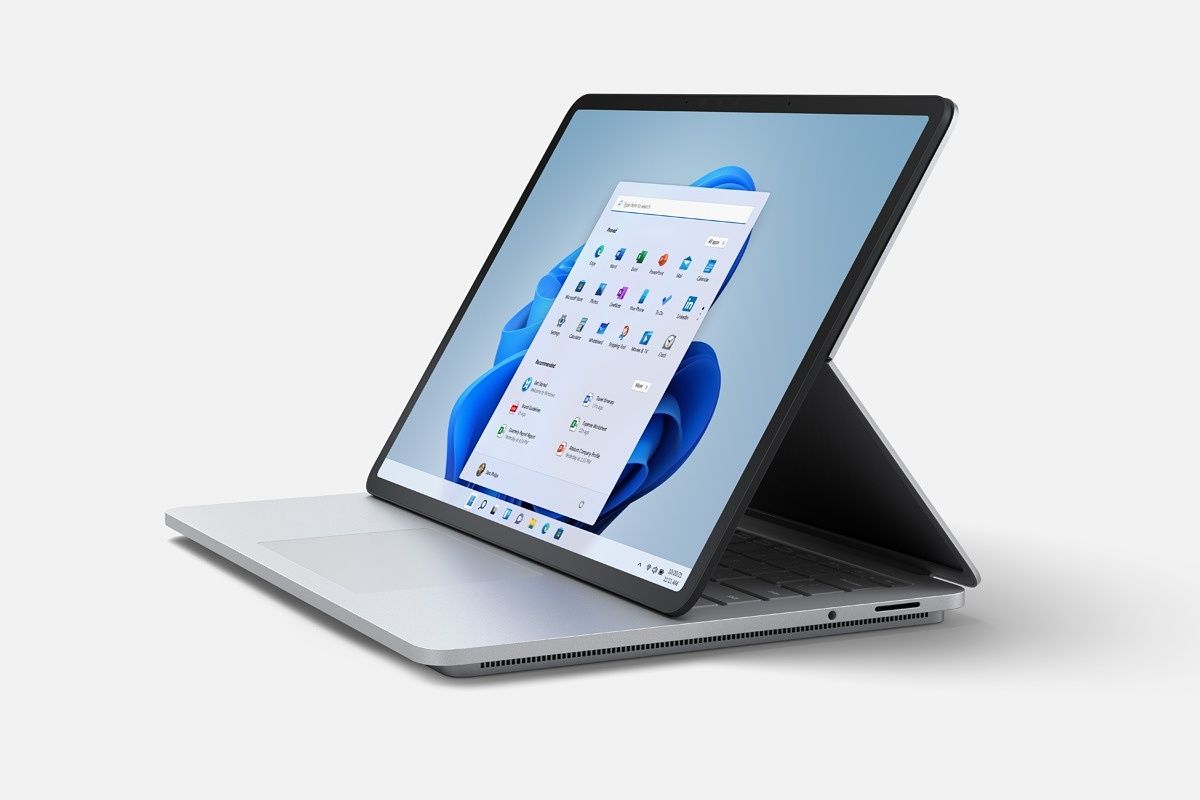
Microsoft Surface Laptop Studio
The Surface Laptop Studio comes with an all-new design, more powerful internals, a 120Hz display, and Thunderbolt support, making it one of the most versatile Surface devices yet.
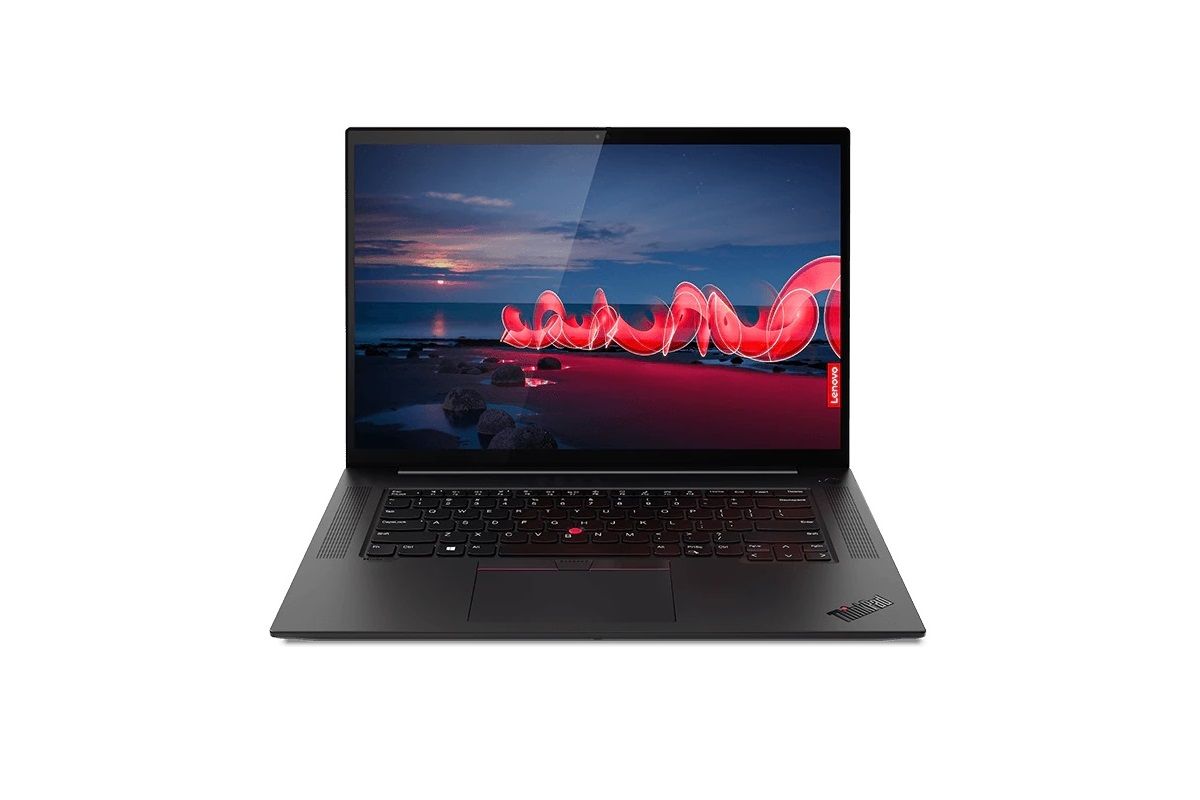
Lenovo ThinkPad X1 Extreme
The Lenovo ThinkPad X1 Extreme is an incredibly powerful 16 inch laptop with high-end Intel CPUs and NVIDIA GeForce RTX graphics. It can be had with up to 64GB of RAM and 4TB of storage, plus an Ultra HD+ display.

